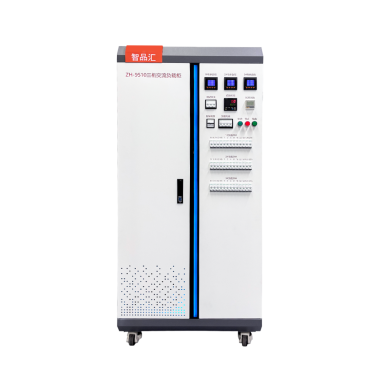In the world of automated control, relays are like precise electronic switches, shouldering the core mission of connecting and disconnecting circuits. From motor control in industrial production lines to power management in smart homes, relay reliability directly determines the stable operation of the entire system. Relay load cabinet electrical life testing simulates extreme operating conditions under real-world conditions, decoding the durability of this “heart of the switch” and providing a scientific basis for its long-term stable operation.
The electrical life of a relay refers to the maximum number of times it can normally connect and disconnect under specified load conditions. This seemingly simple metric involves a complex series of physical and chemical processes, including arc erosion, contact wear, and thermal aging. When a relay connects or disconnects a circuit, an arc is generated between the contacts. The high-temperature arc not only burns the contact surface, increasing contact resistance, but also accelerates oxidation and evaporation of the contact material. Furthermore, temperature fluctuations caused by frequent switching can gradually age components such as the relay’s insulation and coil, ultimately leading to faults such as contact adhesion and failure to close. Therefore, electrical life testing is more than a simple “count” of cycles; it is a comprehensive assessment of the relay’s overall performance under dynamic loads.
Relay load cabinets, as core equipment for electrical life testing, simulate various load scenarios that relays may encounter in actual operation. Different types of relays (such as AC relays, DC relays, and high-power relays) face vastly different load characteristics—some must handle instantaneous start-up inrush currents, while others must withstand a stable rated current over long periods. Through sophisticated circuit design, load cabinets precisely adjust parameters such as voltage, current, and power factor to replicate resistive, inductive, and capacitive loads. They can even simulate extreme operating conditions such as short circuits and overloads, ensuring test results more closely reflect actual application scenarios.
The electrical life test process is rigorous and meticulous. Before testing, a detailed test plan must be developed based on the relay’s model specifications, rated parameters, and application areas, in accordance with international standards (such as IEC 61810) or industry specifications. This plan specifies the connection and disconnection cycles (e.g., thousands of operations per hour), load size (e.g., 100% rated load or 110% overload), and environmental conditions (temperature, humidity, air pressure, etc.). During testing, the load cabinet and relay form a closed-loop system, using an automated control module to achieve high-frequency on-off operation of the relay. Sensors simultaneously monitor key parameters such as contact voltage, current, contact resistance, and actuation time in real time. If a parameter exceeds a threshold (e.g., excessive contact voltage drop or inability to disconnect normally), the relay is deemed to have reached the end of its electrical life.




